Overview
Wine loyalty programs significantly enhance customer engagement and sales by cultivating deeper connections through personalized experiences and tailored rewards. This approach not only elevates client satisfaction but also boosts retention rates. Effective strategies, such as storytelling and exclusive member benefits, are illustrated in the article as key drivers that not only encourage repeat purchases but also substantially increase the average order value. Ultimately, these initiatives lead to sustainable revenue growth for wineries, establishing a compelling case for their implementation.
Introduction
Wine has long been celebrated for its ability to bring people together. However, in today’s competitive market, wineries are discovering that fostering deeper connections with their customers is essential for sustained success. Wine loyalty programs are emerging as a powerful tool for enhancing customer engagement and driving sales. They offer unique rewards and personalized experiences that transform casual buyers into devoted club members. As consumer preferences evolve, wineries must consider: how can their loyalty initiatives not only capture attention but also create lasting relationships? This article explores ten innovative ways that wine loyalty programs can boost customer engagement and sales, providing insights into strategies that can help wineries thrive in a dynamic landscape.
Enocap: Transform DTC Sales Channels for Loyalty Program Success
Enocap excels in providing comprehensive consulting services that transform DTC sales pathways—an essential strategy for vineyards aiming to enhance their membership programs. By prioritizing direct consumer engagement, vineyards can craft compelling narratives that resonate with clients, effectively converting casual purchasers into loyal club members.
The implementation of robust DTC strategies not only enables vineyards to gather crucial insights into consumer preferences but also empowers them to refine wine loyalty programs and tailor rewards that foster deeper connections. This approach significantly boosts client satisfaction and drives sustainable revenue growth, with some vineyards achieving remarkable e-commerce growth of up to 191% through and client retention strategies.
Furthermore, services such as media placement and PR can significantly amplify these efforts, ensuring a formidable market presence.
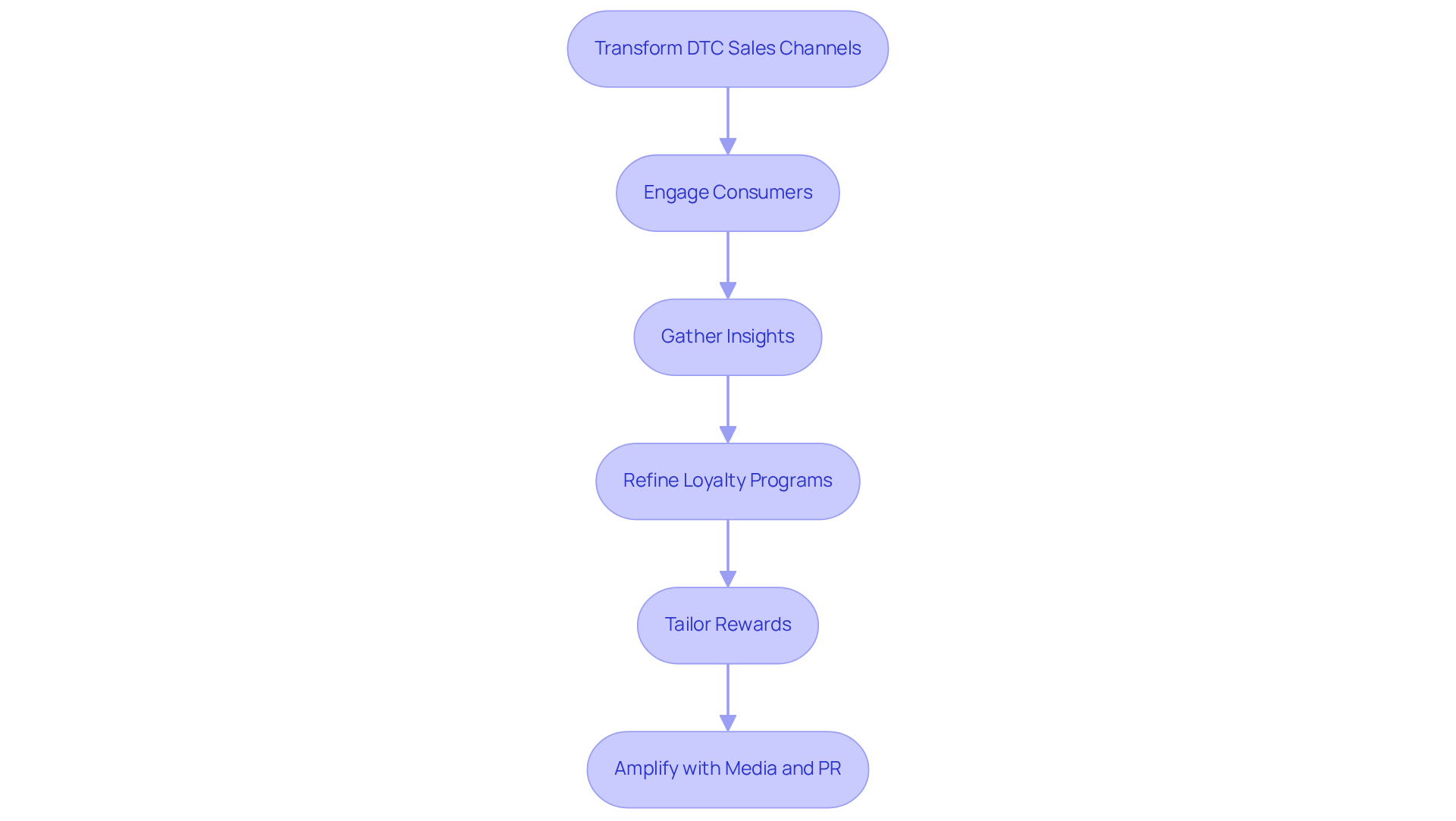
Build Customer Loyalty Through Effective Retention Strategies
To cultivate unwavering client allegiance, wineries must implement robust that prioritize individualized communication and distinctive member perks through their wine loyalty programs. Engaging clients through tailored newsletters, exclusive invitations to special events, and early access to new releases within wine loyalty programs fosters a profound sense of belonging and appreciation.
For instance, tiered rewards can incentivize clients to actively participate in the initiative, thereby strengthening their bond with the brand. This approach not only enhances retention rates but also fortifies the emotional connections between vineyards and their clientele, ultimately promoting long-term commitment through wine loyalty programs.
Furthermore, strategic capital planning can bolster these initiatives by ensuring that vineyards possess the requisite resources to execute effective customer retention strategies. Leveraging personalized communication will be pivotal for vineyards striving to distinguish themselves and cultivate enduring relationships with their clientele.
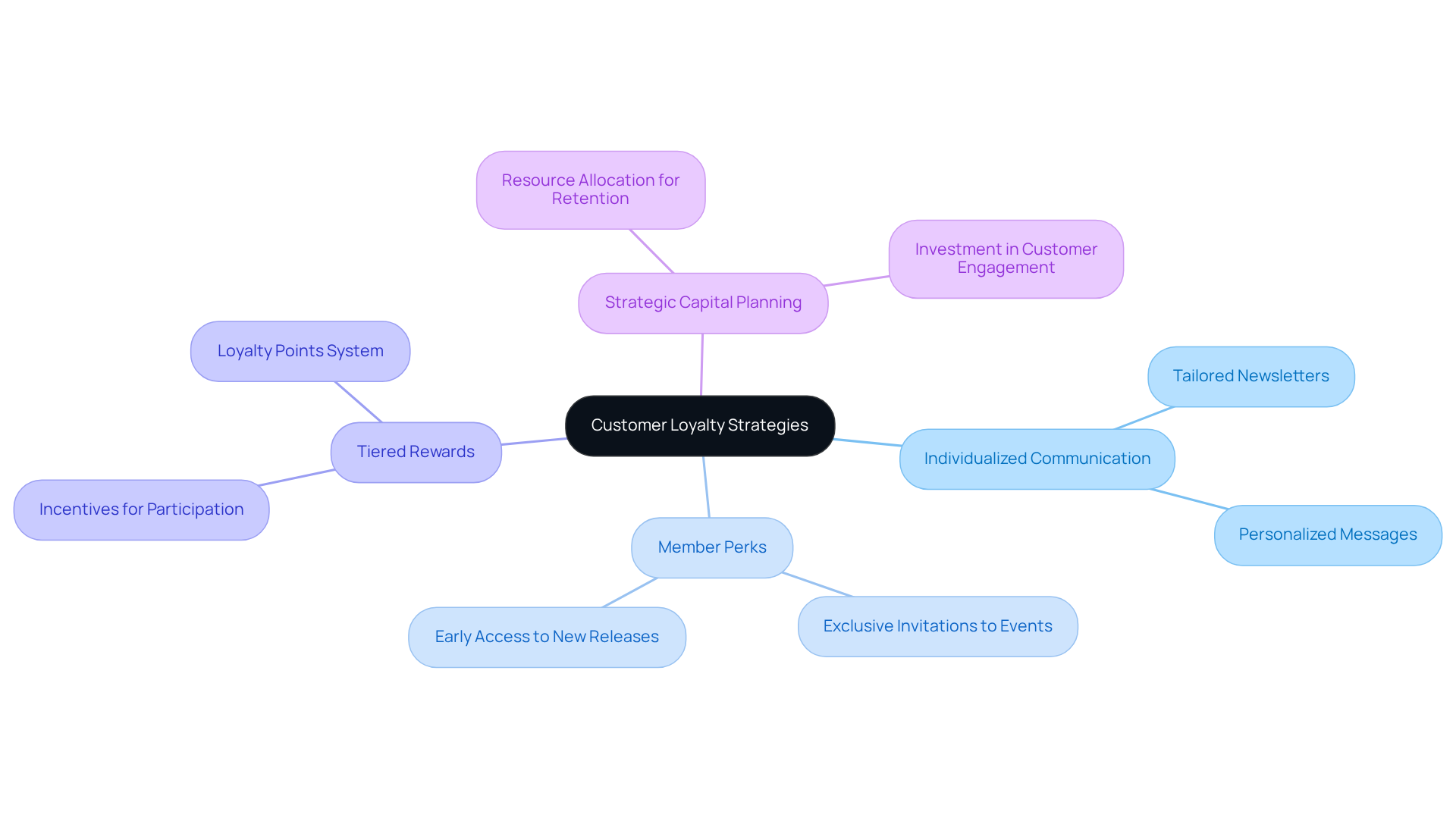
Enhance Cash Flow with Loyalty Programs
Implementing wine loyalty programs can significantly enhance cash flow for wineries by driving repeat purchases and increasing the average order value (AOV). A points-based system that rewards clients for every dollar spent motivates them to buy more to reach reward thresholds. Notably, studies show that current clients generally spend 67% more than new ones. Furthermore, a mere 5% rise in retention can result in profit growth of 25% to 95%. Wine loyalty programs are also , as they cultivate a group of repeat patrons who are typically cheaper to keep. Additionally, satisfied clients can create natural word-of-mouth promotion, thereby increasing the initiative's worth. This strategic approach not only stabilizes cash flow but also lays the groundwork for [sustainable long-term growth](https://fastercapital.com/topics/the-benefits-of-loyalty-programs-for-both-customers-and-businesses.html/4). It aligns seamlessly with [Enocap's mission to unlock direct-to-consumer revenue](https://enocap.com) and craft compelling brand stories that resonate with loyal club members.
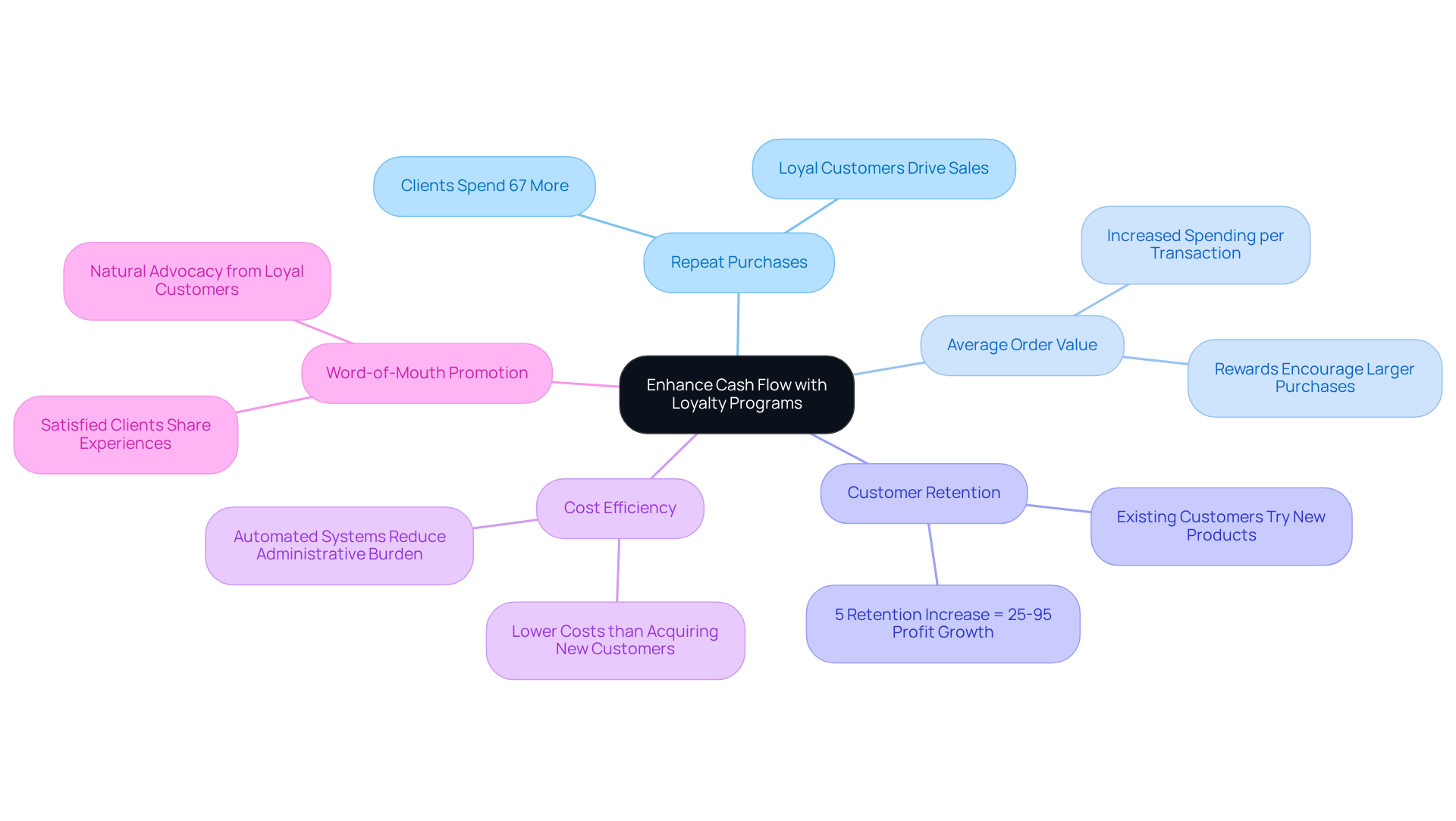
Forge Meaningful Connections with Consumers
Wineries have the opportunity to cultivate profound connections with consumers by leveraging storytelling and personalized experiences—essential components of . By sharing the establishment's rich history, the intricacies of the winemaking process, and the passionate individuals behind the brand, wineries can foster an emotional bond with customers.
Exclusive events for wine loyalty programs members, such as intimate vineyard tours or curated wine tastings, further strengthen these connections. For instance, Quinta do Vallado has successfully transformed its tours by integrating storytelling, significantly enhancing visitor engagement and satisfaction. This approach makes patrons feel appreciated and essential to the vineyard's narrative, cultivating wine loyalty programs that foster repeat business and enduring connections.
Studies indicate that emotional involvement through storytelling is considerably more effective than conventional marketing methods, underscoring the necessity for vineyards to prioritize these tactics in their outreach efforts. As Kindra Hall aptly states, "Facts tell, stories sell," emphasizing the critical nature of crafting compelling narratives.
To implement these strategies effectively, wineries should focus on developing a Value Story that highlights the emotional connections between their brand and clients, while also considering strategic capital planning to support sustainable growth.
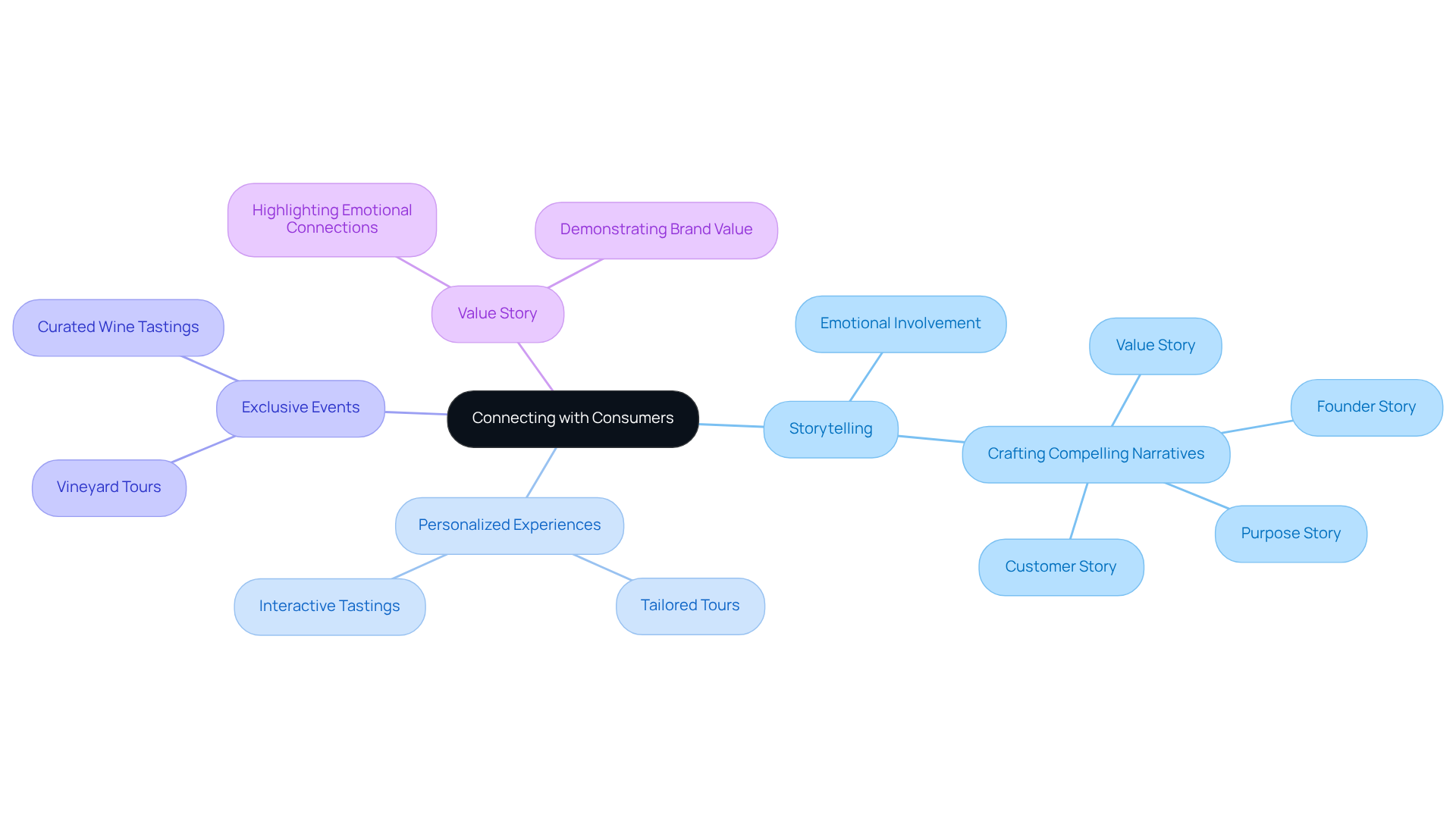
Leverage Compelling Storytelling in Loyalty Programs
Engaging narratives are a powerful tool for enhancing membership programs, as they create stories that resonate personally with individuals. Wineries can effectively convey their through various channels, including social media, newsletters, and in-person events. For example, emphasizing the vineyard's rich heritage, commitment to sustainable practices, or the passion behind each bottle can significantly engage patrons. This emotional connection cultivates wine loyalty programs and encourages patrons to share their experiences, thus expanding the establishment's reach and impact.
Moreover, vineyards should consider strategic capital planning to bolster their storytelling efforts, ensuring they have the resources necessary for promotion and client engagement initiatives. As Kathy Kelley, a professor of Horticultural Marketing and Business Management, notes, "Ultimately, hosts need to know how to craft and present a narrative that inspires their customers to take positive actions, such as purchasing wine and sharing experiences with others."
By harnessing these narratives and strategic planning, wineries can forge a compelling brand presence that resonates with consumers, drives sales, and cultivates sustainable direct-to-consumer channels, such as wine loyalty programs, that transform casual buyers into loyal club members.
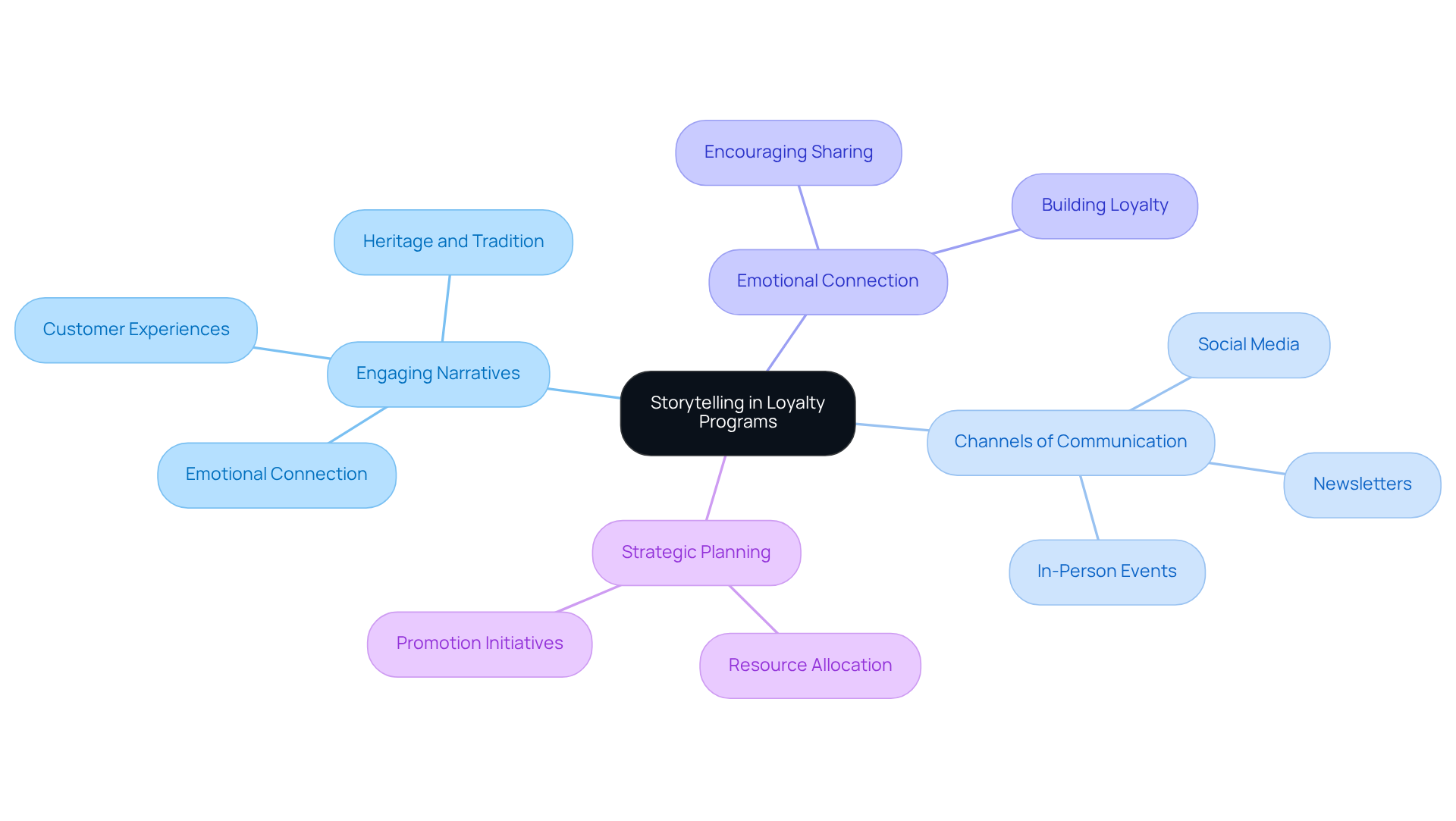
Adapt to Changing Consumer Preferences with Loyalty Programs
Wineries must consistently refine their , particularly through wine loyalty programs, to align with the evolving preferences of consumers. This approach includes offering flexible rewards through wine loyalty programs, such as personalized discounts or exclusive access to limited-edition wines, which can effectively transform casual buyers into devoted club members.
Moreover, the integration of technology, like mobile applications for convenient access to wine loyalty programs, significantly enhances the user experience and fosters sustainable direct-to-consumer channels. By remaining vigilant to trends and actively seeking consumer feedback, vineyards can ensure their wine loyalty programs are relevant and appealing.
This ultimately drives customer engagement and retention while encouraging long-term growth.
How can your winery adapt to these changing dynamics to secure a loyal customer base?
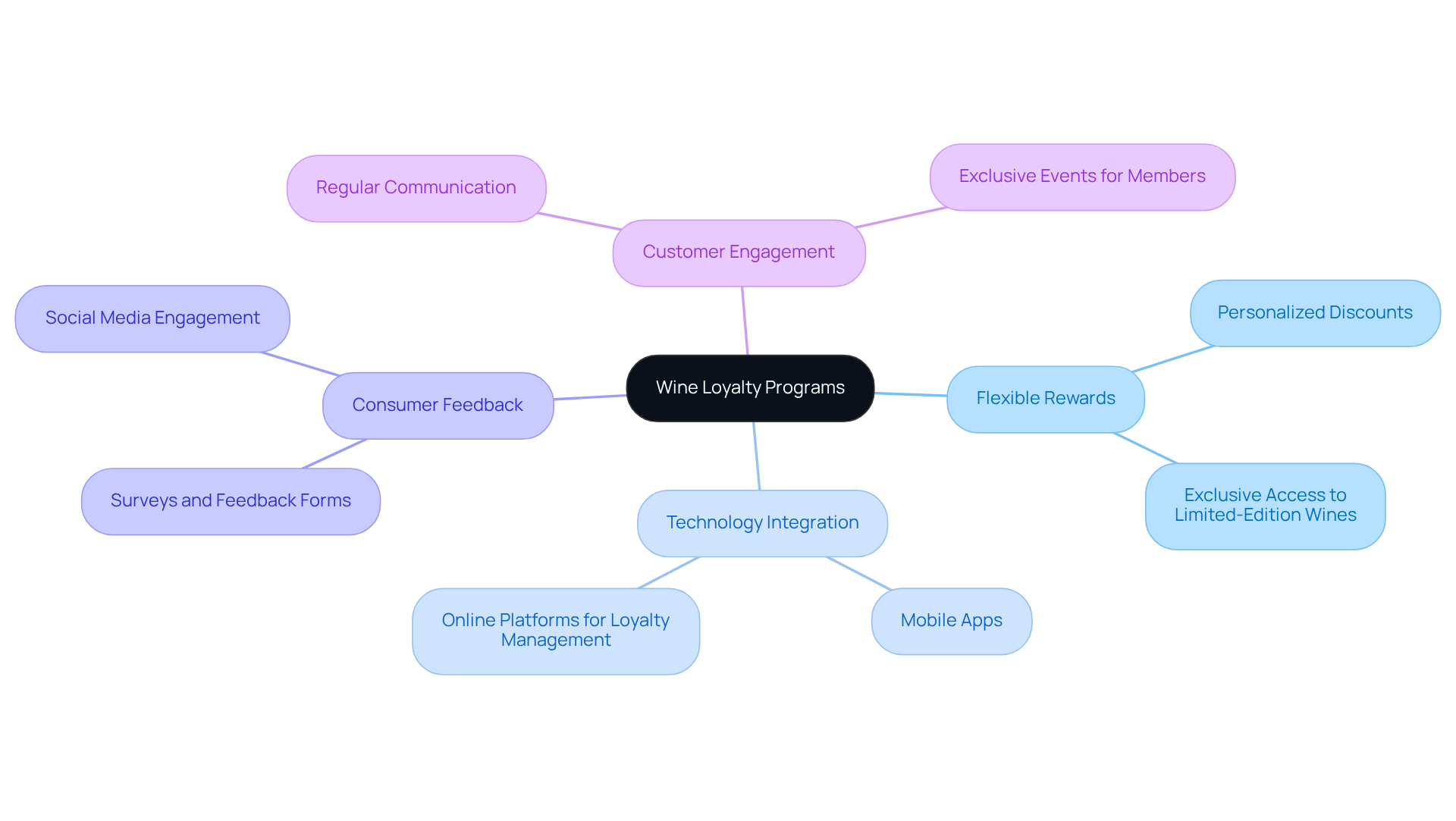
Gain Competitive Advantage Through Loyalty Programs
Establishing a robust wine loyalty program is essential for vineyards seeking a competitive edge in 2025. By offering distinctive incentives and personalized experiences, vineyards can effectively set themselves apart from their competitors. Unique incentives, such as:
- Exclusive member-only events
- Customized wine experiences
cultivate a sense of exclusivity that resonates with consumers. This strategy not only fosters by implementing [wine loyalty programs](https://forbes.com/sites/cathyhuyghe/2014/02/06/top-10-inspirational-quotes-from-the-world-of-wine) but also bolsters the vineyard's reputation in the marketplace. For instance, wine loyalty programs that offer:
significantly enhance the client experience, making patrons feel valued and connected to the brand. As Hardy Wallace insightfully states, wine serves as a link between the earth and the universe; thus, crafting memorable experiences can deepen this connection for consumers. By prioritizing exceptional customer service and innovative incentives offered through wine loyalty programs, vineyards can attract a loyal clientele, ensuring sustained success in an increasingly competitive landscape.
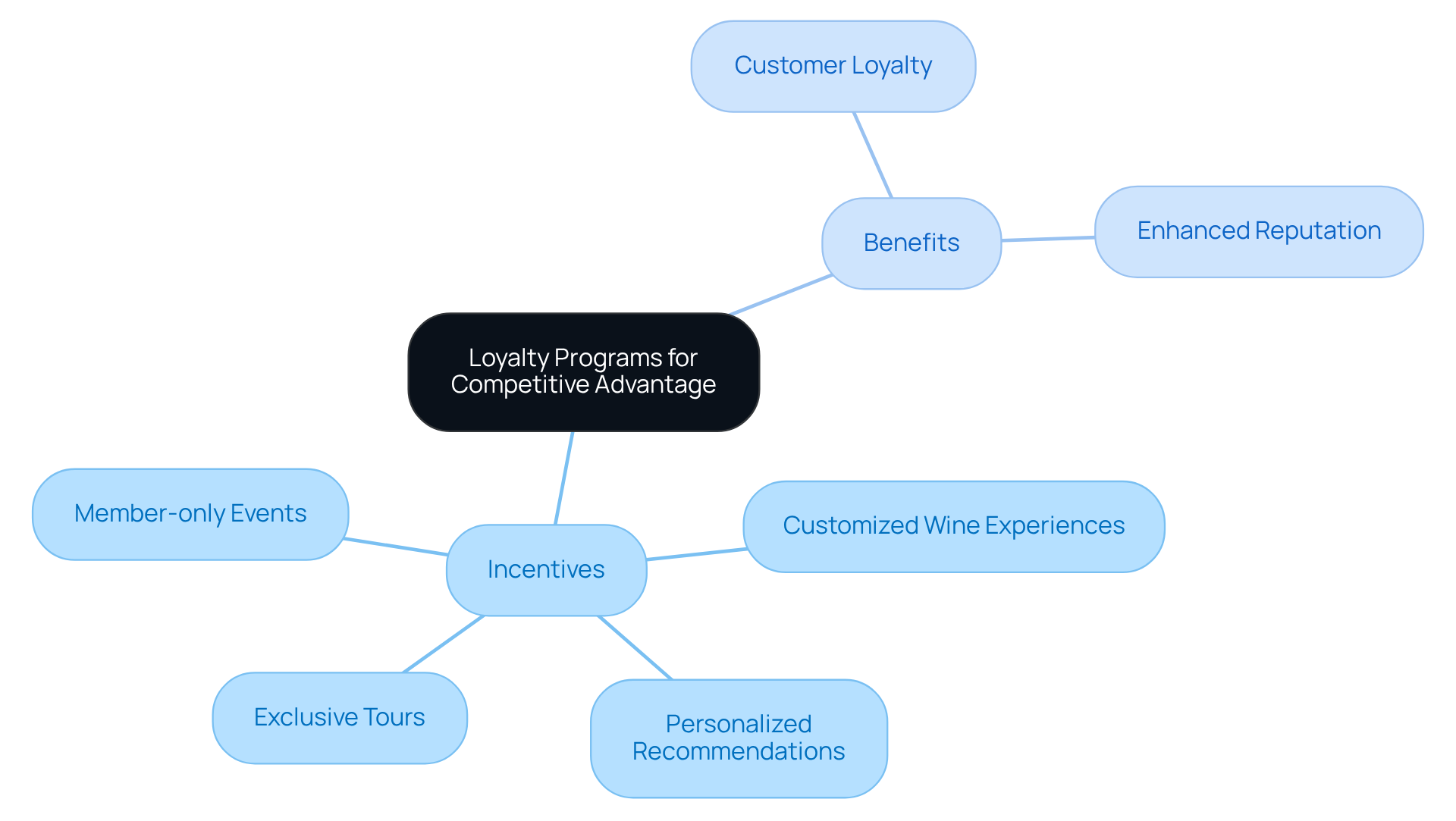
Utilize Data-Driven Insights for Program Optimization
Wineries must leverage data-driven insights to enhance their continuously. By examining consumer behavior, preferences, and engagement metrics, vineyards can uncover trends and effectively customize their offerings. For example, identifying the most popular incentives allows vineyards to adjust their retention strategies to align with client expectations.
Furthermore, utilizing client insights is crucial for promoting enhancements and innovations, ensuring that initiatives remain attractive and effective in cultivating loyalty. Successful vineyards demonstrate that those who actively engage in consumer behavior analysis experience significant benefits; participants in membership programs tend to spend 20% more than non-participants, underscoring the importance of tailored experiences.
By refining rewards systems using client information, vineyards can craft compelling narratives and emotional connections that enhance client retention and drive sales. Additionally, by adopting effective strategies to convert casual purchasers into devoted club members, vineyards can establish lasting direct-to-consumer channels that not only support steady growth but also elevate the overall client experience.
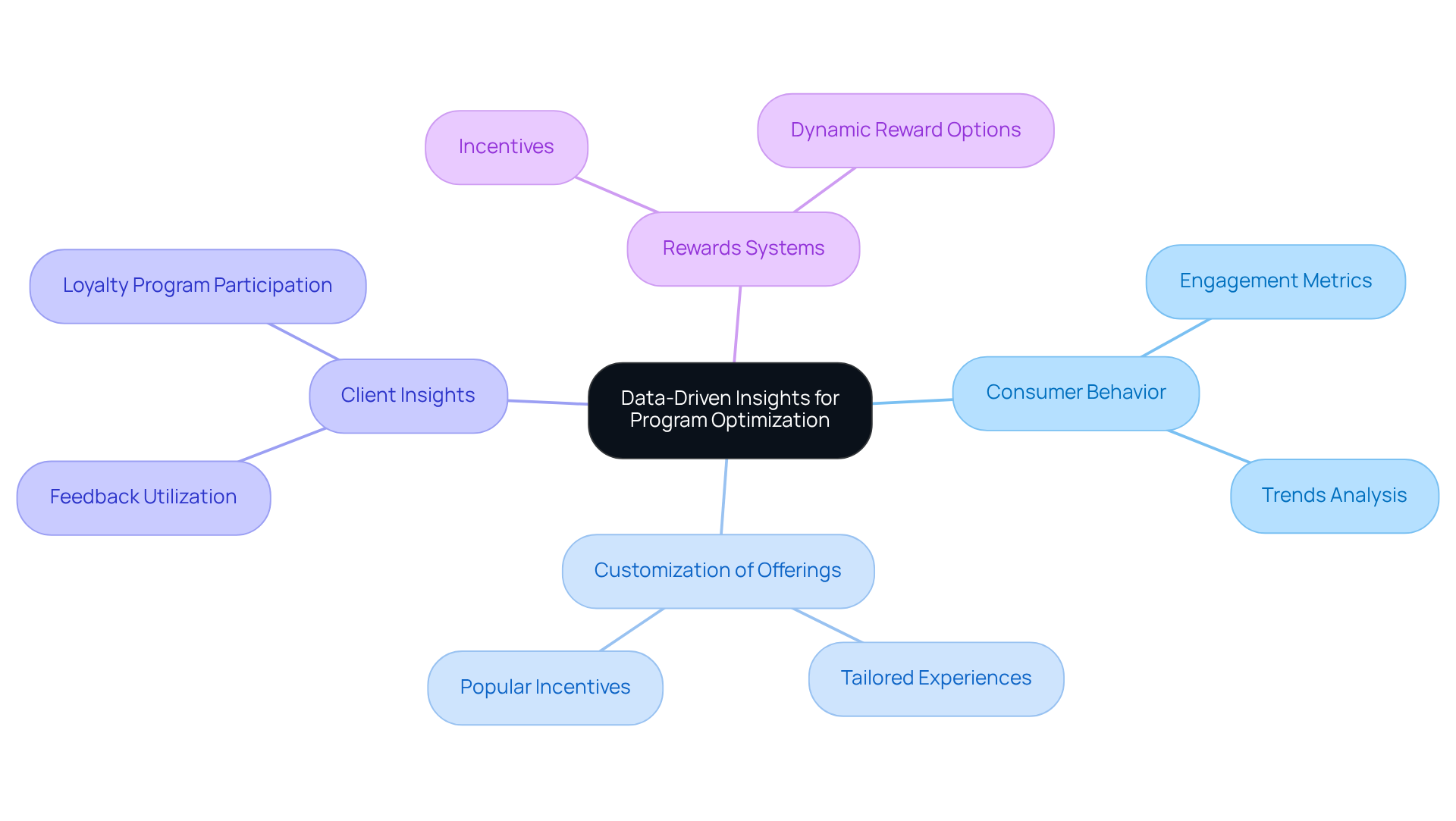
Scale Your Loyalty Programs for Sustainable Growth
To achieve sustainable growth, wineries must enhance their by expanding their offerings and incorporating wine loyalty programs to broaden their reach. This can be accomplished through the implementation of wine loyalty programs with tiered levels that reward clients for increased spending or engagement. Additionally, partnerships with local businesses or events can significantly boost the visibility of these initiatives, attracting new members. By consistently innovating and adapting wine loyalty programs to meet client needs, wineries can ensure ongoing success and profitability.
Ensure Long-Term Success with Loyalty Programs
To ensure sustained success, wineries must prioritize the development of their to enhance customer retention initiatives. This requires a consistent assessment of performance, gathering client feedback, and implementing necessary modifications to keep the initiative vibrant and appealing. A vital strategy is to cultivate a community around the rewards program, leveraging social media interactions and organizing exclusive events to strengthen connections with patrons. Enocap's expertise in direct-to-consumer strategies—including strategic planning and market intelligence—can empower producers to transform casual buyers into loyal club members, driving consistent growth. For instance, establishments like Quail's Gate have effectively emphasized customer service and personalization, fostering a robust online presence that enhances commitment.
Moreover, with 63% of adults consuming alcohol and a noted decline among younger consumers, it is imperative to adapt loyalty programs to engage this demographic. Enocap's services can assist vineyards in customizing their strategies to align with the expectations of younger wine consumers. By committing to continuous improvement and innovation, wineries can forge lasting relationships with their customers, ultimately driving sustained growth and profitability. Engaging consumers in meaningful ways not only enhances loyalty but also aligns with the values-driven preferences of today’s wine drinkers, positioning community building as an essential component of effective wine loyalty programs. This aligns with Allison Luvera's three-part marketing approach, which underscores community building as a key strategy for engaging modern wine consumers, supported by Enocap's strategic advisory services.
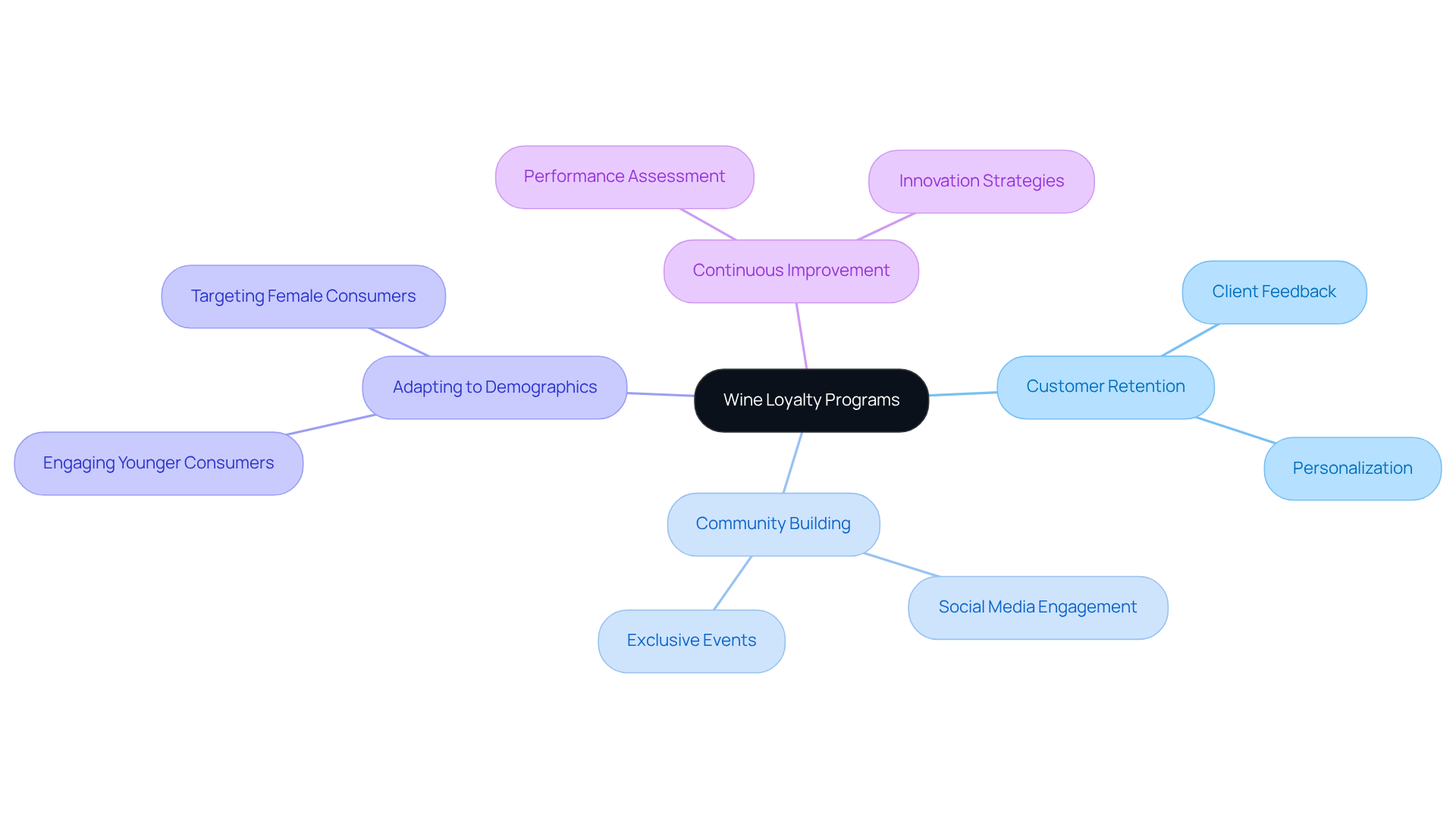
Conclusion
Implementing wine loyalty programs stands as a transformative strategy that not only enhances customer engagement but also drives sales and fosters enduring relationships between wineries and their patrons. By concentrating on direct-to-consumer channels, wineries can craft personalized experiences that resonate deeply with customers, converting occasional buyers into devoted club members. This approach emphasizes the critical nature of understanding consumer preferences and weaving compelling narratives that connect emotionally with clients.
Throughout this article, various strategies have been delineated to illustrate how wine loyalty programs can yield substantial benefits. From leveraging data-driven insights to optimize offerings to creating exclusive experiences that cultivate a sense of belonging, each tactic contributes to establishing a robust loyalty framework. The focus on storytelling and personalized communication further underscores the necessity for wineries to engage consumers meaningfully, ensuring that loyalty programs not only attract members but also retain them over time.
Ultimately, the importance of adapting loyalty programs to align with evolving consumer preferences cannot be overstated. As wineries adopt innovative strategies and prioritize customer relationships, they position themselves for sustainable growth and success in an increasingly competitive market. By committing to continuous improvement and utilizing the insights provided, wineries can develop loyalty programs that not only enhance cash flow but also foster a community of passionate wine lovers. Investing in these initiatives transcends mere business strategy; it embodies a commitment to nurturing lasting connections with consumers that will shape the future of the wine industry.
Frequently Asked Questions
What is Enocap's role in transforming DTC sales channels for vineyards?
Enocap provides comprehensive consulting services that enhance direct-to-consumer (DTC) sales pathways, helping vineyards improve their membership programs by engaging consumers and converting casual buyers into loyal club members.
How do robust DTC strategies benefit vineyards?
Robust DTC strategies allow vineyards to gather insights into consumer preferences, refine wine loyalty programs, and tailor rewards, which boosts client satisfaction and drives sustainable revenue growth.
What kind of growth have vineyards experienced through effective DTC strategies?
Some vineyards have achieved remarkable e-commerce growth of up to 191% through effective demand generation and client retention strategies.
What retention strategies can wineries implement to build customer loyalty?
Wineries can implement individualized communication and distinctive member perks, such as tailored newsletters, exclusive event invitations, and early access to new releases, to foster a sense of belonging and appreciation among clients.
How do tiered rewards influence client participation in wine loyalty programs?
Tiered rewards incentivize clients to engage actively in loyalty initiatives, strengthening their bond with the brand and enhancing retention rates.
What is the impact of personalized communication on customer retention?
Personalized communication is crucial for wineries aiming to distinguish themselves and cultivate lasting relationships with their clientele, ultimately promoting long-term commitment.
How can wine loyalty programs enhance cash flow for wineries?
Wine loyalty programs can enhance cash flow by driving repeat purchases and increasing the average order value (AOV) through a points-based system that rewards clients for spending.
What are the financial benefits of retaining existing clients compared to acquiring new ones?
Current clients generally spend 67% more than new ones, and a 5% increase in retention can lead to profit growth of 25% to 95%, making loyalty programs more economical than attracting new clients.
How do satisfied clients contribute to the success of loyalty programs?
Satisfied clients can generate natural word-of-mouth promotion, increasing the value of loyalty initiatives and stabilizing cash flow while laying the groundwork for sustainable long-term growth.




